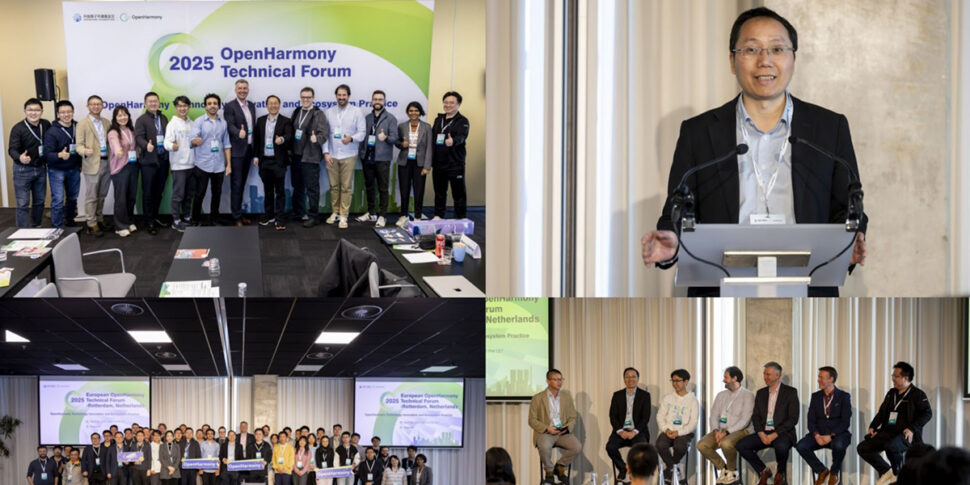
OpenHarmony, the open-source operating system founded by Huawei, has made significant strides in its global outreach with the debut of its first-ever European Technical Forum in Rotterdam, the Netherlands. The event marked a key milestone for the project, showcasing its potential for cross-industry innovation and emphasising its commitment to an open, collaborative technological ecosystem.
The OpenHarmony project has rapidly evolved since its inception, attracting developers, industry experts, and organisations from across the world. As an open-source platform, it is designed to power a wide range of smart devices, from smartphones to wearables, smart homes, and automotive applications. Its capabilities have grown, positioning OpenHarmony as a strong alternative to other established operating systems, particularly in the field of Internet of Things development.
The forum, held in early April, gathered leading experts, researchers, and tech enthusiasts, serving as a pivotal moment for the European market. The event featured a series of talks and technical discussions, offering insights into the latest developments in OpenHarmony’s architecture, security features, and application ecosystem. It also presented a valuable opportunity for businesses to explore collaboration prospects with developers and stakeholders in the broader open-source community.
One of the forum’s key themes revolved around the increasing importance of open-source software in an interconnected world. OpenHarmony’s growing ecosystem and its emphasis on versatility, particularly within IoT, resonated strongly with attendees. The project’s supporters are increasingly advocating for a more interoperable, open digital environment that can be modified and expanded by various contributors, rather than remaining locked within proprietary frameworks.
The event highlighted several advancements in the OpenHarmony operating system, including enhancements to its distributed technology. The platform enables seamless integration and communication between various devices within the same network, an essential feature for the IoT industry. Developers presented use cases demonstrating how OpenHarmony facilitates efficient data sharing across multiple devices, optimising user experiences and expanding functionality.
Security was a major talking point during the forum. OpenHarmony’s security architecture, designed to safeguard data across devices, was extensively discussed. With the rise of cyber threats and concerns over data privacy, the ability to ensure robust protection within an open-source ecosystem is a critical issue for the project’s adoption. Keynote speakers elaborated on the platform’s advanced security mechanisms, which help ensure that the system remains resilient against emerging threats.
The forum also served as a platform for partnerships and collaborations. Several prominent tech companies expressed their interest in leveraging OpenHarmony for their own products and services. The open-source nature of the platform offers significant advantages for companies looking to customise and optimise their solutions without being locked into proprietary software. A growing number of industries, from consumer electronics to automotive, are exploring the potential of OpenHarmony to enhance their technological offerings.
The OpenHarmony Technical Forum’s European debut also underlined the growing influence of the operating system in a region traditionally dominated by established players like Android and iOS. Despite the stiff competition, OpenHarmony’s adaptability and the backing of major corporations, including Huawei, have given the platform a strong foothold. As more industries seek open, customisable solutions, OpenHarmony’s ability to meet diverse technological needs continues to drive its appeal.
The forum was also an opportunity to showcase the ongoing contributions of the OpenHarmony community. Open-source software thrives on collaboration, and the event served as a testament to the global nature of the project. With contributors from all corners of the world, the European forum emphasised the project’s commitment to building a diverse and inclusive ecosystem. Several developers presented their open-source projects built on top of OpenHarmony, showcasing the platform’s flexibility and potential for expansion.
While OpenHarmony’s success in Europe is still in its early stages, the technical forum indicated a promising future for the platform in the region. The event served as a launchpad for future initiatives, with attendees excited about the potential for more regional forums and continued engagement between developers, companies, and other stakeholders. The growing interest in OpenHarmony in Europe also signals a shift in the broader tech industry towards more open and collaborative software development.





